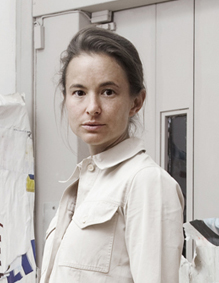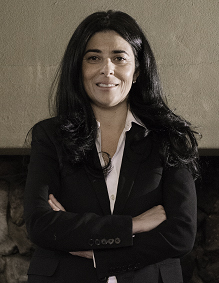Professionals Insight
Artprice: What decision(s) have you recently taken to consolidate the development of your gallery?
Magda Danysz

Magda Danysz in front of works by VHILS. Photo by Céline Barrère.
Danysz Gallery. Paris, Shanghai, London
“The development of a primary market art gallery depends on its capacity to open up prospects and opportunities for the artists it represents. In recent years, the gallery has actively deployed its international network, complementing our outlets in Paris and Shanghai with a highly complementary presence in London. International exposure is absolutely essential for the careers of modern-day artists.
In areas where the gallery and/or artists are less present, such as Southeast Asia, the gallery has strengthened cooperation with institutions (such as the ArtScience Museum in Singapore) by developing ambitious exhibition projects.
As a gallery focused on discoveries, it is essential for us to continue to discover the great talents of tomorrow and propose new artists every year. This year, for example, we have been promoting the Spanish artist Felipe Pantone and the Palestinian Abdul Rahman Katanani. In addition, as the career development of our artists also relies on projects implemented by the gallery, expanding our teams with the right people has been a crucial part of growth.
While a strong internet profile is undoubtedly an unavoidable necessity, our current online presence is not yet efficient enough, although it is perhaps a little early to draw conclusions about its impact on our development. At the gallery, we are developing an active Internet policy both internally and with external partners, and we hope that new models will soon come to improve this form of diffusion.”
Liza Essers

Liza Essers – Copyright Mikhael Subotzky
Goodman Gallery. Cape Town, Johannesbourg
“Part of the gallery’s development has come from our participation in major international art fairs. From Frieze to Basel, Goodman Gallery has grown its international presence by presenting well established names such as William Kentridge, David Goldblatt, Ghada Amer and Shirin Neshat, as well as emerging artists like Kudzanai Chiurai, Mikhael Subotzky, Misheck Masamvu and Kapwani Kiwanga. Thanks to these efforts, our artists have gone on to present their work at prestigious events. Recent examples include Frieze Sculpture 2018, which featured a work by Haroon Gunn-Salie and the inclusion of Grada Kilomba on the 10th Berlin Biennale.
Another important part of our development has been increasing local accessibility to art. Given South Africa’s history of exclusion under apartheid, we have committed to partnering with museums and public institutions to assist with funding public art projects. Last year, for instance, we helped stage an El Anatsui exhibition at the Iziko National Gallery, following its showing at our space in Johannesburg.
I took over as owner and director of Goodman Gallery ten years ago. In that time, we’ve grown our programme to include a global roster of artists in an effort to further our reach beyond the African continent and position ourselves as an international contemporary art gallery. As far as our process for selecting new artists, Goodman Gallery has a long tradition of presenting politically-charged art, which I’ve continued by representing and showing artists whose practices pay particular attention to issues related to colonial legacies, as well as providing a platform for greater dialogue between the global south. This ethos is embodied in our 2018 programme, which features Yinka Shonibare MBE, Ghada Amer, ruby onyinyechi amanze, Ernesto Neto and Alfredo Jaar.”





 30.6
30.6
